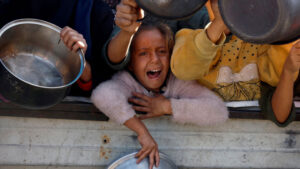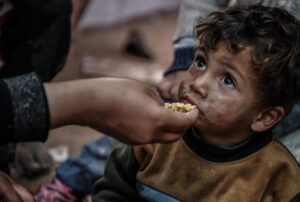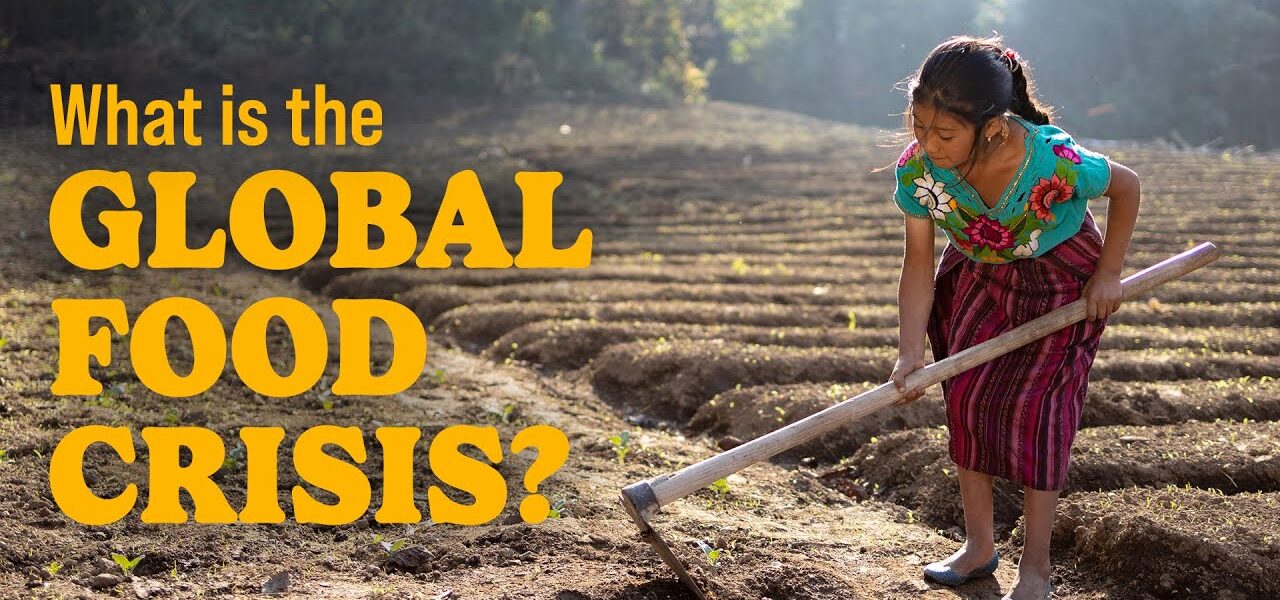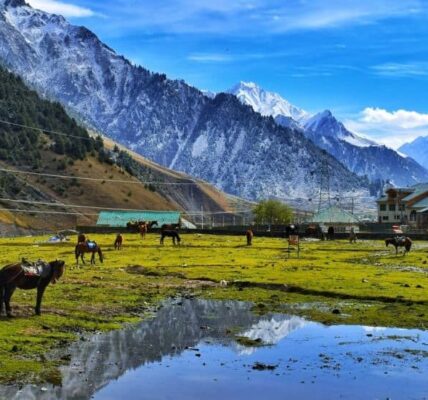“Food Crisis: The Story of an Unending War”

“The world is prosaic in the kingdom of hunger
The full moon is like scorched bread.”
An empty vessel, a hopeless gaze, a child counting hours of waiting. There is only one question in his eyes – “Will you get food today?”
While the world is at the pinnacle of technology, while humans are conquering the universe, millions of children sleep with hungry stomachs and endless pain. At one end is the waste of food, and at the other end is the heart-broken wailing — wailing for just a handful of food.
Is the Food crisis really destiny, or our failure? About 828 million people around the world go to bed hungry every day, while nearly one-third of food is wasted every year. So the problem is lack of food, or uneven distribution?
Food supply by population
“Food crisis” has taken a terrible shape in the whole world! According to the report of the previous years, about 55 countries of the world are on the list of food crisis. These countries include:
Afghanistan:
The country is on the list of one of the world’s food crisis. The country has long faced a humanitarian crisis due to conflict, political instability, climate change and economic deterioration. According to the United Nations, 2.3 million people in Afghanistan (55%https://dailystarnewss.com of the total population) suffer from extreme food insecurity. 1 in 3 is food insecure. Nearly 1 million children are suffering from severe malnutrition, putting their lives at grave risk.

West Africa:
According to the 2021 survey, the population of West Africa is about 419 million, compared to 381.98 million in 2017. This highly populated region is also plagued by epidemics like food shortages. Oxfam, Alima and Save the Children have warned that a severe food crisis could affect up to 27 million people in West Africa. A national food emergency was declared on 2 June 2022.
Kenya:
According to the 2022 revision of World Population Prospects, the total population of Kenya in 2021 was 53,005,614. Kenya faces its worst food crisis in 40 years, leaving nearly 4.4 million people food insecure.
Yemen:
The country’s population in 2024 was estimated at 40,583,113. Yemen has been experiencing a food crisis since 2016, which began during the country’s civil war. According to the United Nations, an estimated 130,000 people have died as a result of the ongoing war as of December 2020, with food shortages also a contributing factor. In 2018, Save the Children estimated that 85,000 children had died of starvation in the last three years. In September 2022, the World Food Program estimated that 1.74 billion Yemenis were food insecure and predicted that this number could rise to 1.9 billion by the end of the year. The country is still in dire straits. Relief aid is also suspended due to the war situation.

Palestine:
Palestine is currently at the peak of the food crisis. Millions of Palestinians have been killed in the ongoing war between Palestine and Israel for many years. No food, no shelter—the country is in dire straits. Relief aid is not coming, water supply is stopped. Currently, about 1.2 million Palestinians are facing a severe food crisis in Gaza, Palestine.
Bangladesh:
The population of Bangladesh is about 17.47 million, which is gradually increasing; But food supply is not increasing. According to the World Bank report in 2022, about 30% of people in Bangladesh are suffering from food insecurity. According to a UNICEF report, the country’s children are deprived of nutritious food—2 out of every 3 children are malnourished. Many people of the country have to spend their lives without eating one meal at a time, which is very shocking.
Iran:
Excessive inflation has resulted in food shortages in the country. Despite the increase in the price of goods, the salaries and wages are not increasing, as a result of which the lower and middle class people are suffering a lot. Food prices rose by about one-third (30% to 50%), with some products rising by more than 50%. According to Iran International, by February 2025 the price of a kilo of kiwi is equal to 2% of the average income.
Sudan:
The country faced severe food shortages during the war from 2023 to 2024. It is reported that 25.6 million people are suffering from severe food shortages. There is famine in the country. On 19 February 2025, the United Nations confirmed the matter.
Also, various countries of the world including Asia, Europe are suffering from food shortage.
Possible causes of food shortages
Martial Law:
Currently, there is war in different countries of the world, such as the Russia-Ukraine war, Israel-Palestine war, Afghanistan, Iran, China, Syria, Iraq, etc. The Cold war is also ongoing between some countries. When a country is completely devastated in such a situation, the food crisis becomes an epidemic and infects the entire world.
Recently, the ongoing war between Israel and Palestine has put the people of Palestine in dire straits. Thousands of lives are crushed under the ammunition, countless children are destroyed. Lack of food has become an inevitable companion of death. Relief supplies have also stopped in the extreme depravity of humanity.
The Russia-Ukraine war is also one of the causes of the food crisis. The war disrupted the global food supply and imposed restrictions on food exports. According to the World Bank’s Food Security Update in 2023, 20 countries around the world have restrictions on the export of major staple foods.
Economic Context:
Commodity prices are rising abnormally in various countries and inflation is occurring. One of the main reasons is lack of food production. Homesteads and industries are being built in many places without proper utilization of agricultural land. Farmers play an important role in food production but are not getting the value they deserve.
Due to middlemen, brokers and syndicates, commodity prices are increasing abnormally. This discourages the farmers as they are not getting the expected profit compared to the cost. Unscrupulous businessmen create artificial crises and raise food prices for greater profits, making food more scarce for the common man.
When the price of food increases in the global market, the price also increases in the domestic market of the country. Depletion of foreign exchange reserves leads to problems in food imports, thereby reducing the supply of food in the market.
Climate Change:
Climate change is also one of the causes of the food crisis. As a result, agricultural production is declining and food shortages are intensifying. Natural calamities like floods, droughts, cyclones, floods etc. cause huge losses in the agricultural sector.
Droughts lead to crop failure due to lack of water, and excessive rainfall leads to inundation of agricultural land. As a result, production decreases and food prices rise. Climate change is reducing the fertility of agricultural land, resulting in good yields in some seasons and a drop in production in others. Between 2021 and 2023, a global energy crisis will occur, which will have a severe impact on the fertilizer and food production industries. Disruption of fertilizer production also leads to shortfalls in agricultural production, deepening the food crisis.

Conclusion:
In addition, thttps://www.prhttps://www.prothomalo.com/othomalo.com/here are other causes of the food crisis, which are creating major ohttps://www.prothomalo.com/bstacles in meeting the basic needs of people. In the past years, various countries have taken various steps aimed at eradicating hunger, but they have not yet been fully implemented. Every conscious country including international organizations of the world should come forward and take effective steps. Initiatives should be taken to end war in war-torn countries and joint efforts should be made to establish peace. There is no alternative but a concerted initiative and sincere effort to address the food crisis.




